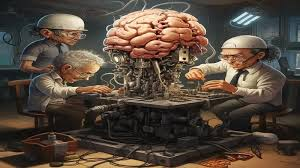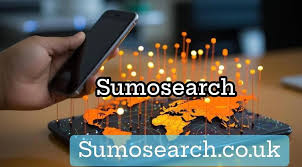From Ideas to Images: The Role of clipart:ee-zgj_h1oc= brain

Introduction to clipart:ee-zgj_h1oc= brain
Visual communication has become a game changer in our fast-paced world, where attention spans are shorter than ever. Enter clipart:ee-zgj_h1oc= brain—a creative tool that bridges the gap between ideas and images. This innovative resource transforms abstract thoughts into vivid visuals, making brainstorming sessions not just productive but also enjoyable.
Imagine being able to express complex concepts with simple illustrations that spark conversations and inspire creativity. Whether you’re an educator aiming to engage students or a business professional looking for fresh ways to present ideas, clipart:ee-zgj_h1oc= brain is your ally. It’s time to explore how this powerful visual aid can enhance your projects, boost memory retention, and evoke emotional responses—all while making your presentations stand out from the crowd. Let’s dive into the multifaceted role of clipart in shaping our thinking and communication!
The Benefits of Using Clipart for Brainstorming
Using clipart during brainstorming sessions can transform the way ideas flow. Visual elements stimulate creativity and encourage participants to think outside the box.
When people see images, it often triggers associations that words alone may not evoke. This visual stimulation can lead to more innovative solutions and diverse perspectives. A simple image might remind someone of an experience or concept they hadn’t considered before.
Moreover, incorporating clipart keeps discussions engaging. It breaks up the monotony of text-heavy brainstorming methods. Participants are likely to stay focused when visuals dominate the discussion space.
Clipart also aids in organizing thoughts visually. Mind maps featuring relevant images help participants connect ideas seamlessly, making complex topics easier to digest. The result? A dynamic exchange where every voice contributes meaningfully to idea generation.
How Clipart Can Help with Memory Retention
Images are powerful. They create lasting impressions that words alone often fail to achieve. When integrated into learning or brainstorming, clipart serves as visual cues that enhance memory retention.
Our brains process visuals faster than text. Using clipart alongside key concepts makes them more memorable. The vibrant colors and distinct designs capture attention, making information easier to recall later.
Moreover, the emotional connections formed with images can deepen understanding. If a learner associates a specific image with an idea, it creates a mental anchor for future retrieval.
In group settings, sharing relevant clipart fosters discussions and collaborative thinking. This interaction helps solidify knowledge in participants’ minds by engaging multiple senses—vision and discussion combined reinforce retention even further.
The Psychological Impact clipart:ee-zgj_h1oc= brain
Visual elements, like clipart, tap into our subconscious mind. They evoke emotions and memories that words alone often cannot convey.
When we see an image associated with a concept, the brain processes it differently. Clipart can trigger associations, making ideas more relatable and memorable. It adds layers of understanding that enhance communication.
Consider how a simple illustration of a lightbulb signifies innovation or creativity. This instant recognition helps audiences grasp complex concepts quickly.
Moreover, the use of color in clipart influences mood. Bright colors can energize and inspire action while softer tones might create calmness and focus.
This psychological interplay between imagery and cognition underscores why incorporating clipart is essential. It transforms abstract thoughts into tangible visuals that resonate deeply with viewers’ minds.
Tips for Incorporating clipart:ee-zgj_h1oc= brain
When incorporating clipart into your brainstorming sessions, consider the context. Choose images that resonate with the theme of your ideas. This helps create a cohesive visual narrative.
Start by curating a selection of clipart that sparks creativity. Organize them in categories for easy access during discussions or presentations. A well-structured library can enhance productivity.
Mix and match different styles to keep things fresh. Combining illustrations with photographs may yield unexpected results, adding depth to your visuals.
Encourage collaboration by inviting team members to contribute their favorite clipart pieces. This fosters a sense of ownership and encourages diverse perspectives.
Don’t be afraid to experiment! Play around with colors, sizes, and placements until you find arrangements that truly captivate attention while maintaining clarity in communication.
Examples of Successful Use of Clipart in Business and Education
Businesses have harnessed the power of clipart to transform their presentations and marketing materials. Companies often incorporate eye-catching visuals to convey complex ideas simply. For example, a tech startup might use colorful icons in its pitch deck to illustrate innovative concepts. This approach makes information more digestible.
In education, teachers employ clipart to enhance lesson plans and worksheets. Visual aids can make learning interactive and engaging for students of all ages. A math teacher might include fun illustrations alongside problems, helping kids visualize abstract concepts.
Non-profit organizations also benefit from using clipart in promotional materials. By incorporating relatable images, they create emotional connections with potential donors or volunteers. It’s about making the message resonate on a deeper level.
These examples showcase how versatile clipart is across various sectors, turning mundane content into compelling visual narratives that captivate audiences effectively.
Conclusion to clipart:ee-zgj_h1oc= brain
The journey from ideas to images is a powerful one. Clipart:ee-zgj_h1oc= brain serves as a bridge, transforming abstract thoughts into tangible visuals. This transformation not only enhances creativity but also aids in memory retention and understanding.
Using clipart effectively fosters an engaging learning environment. It creates a visual narrative that resonates with various audiences, whether in business presentations or educational settings. The psychological impact of seeing concepts illustrated can’t be overstated; it encourages deeper processing of information and stimulates the imagination.
By incorporating clipart strategically, individuals and organizations can unlock new potential within their brainstorming sessions and presentations. The success stories from both business and education highlight its versatility across multiple domains.
Embracing this creative tool opens doors to innovation, making complex ideas more accessible while fostering collaboration among teams or students alike. The role of clipart:ee-zgj_h1oc= brain is indeed significant in shaping how we communicate our thoughts visually, paving the way for clearer understanding and enhanced engagement.
You may also read
puppy:1azdln0ha3y= golden retriever




